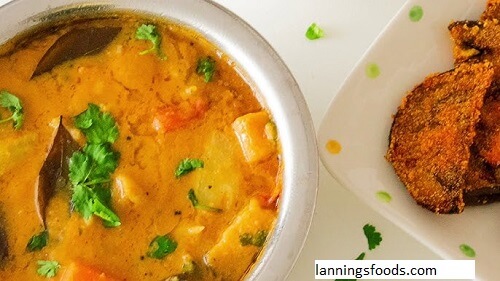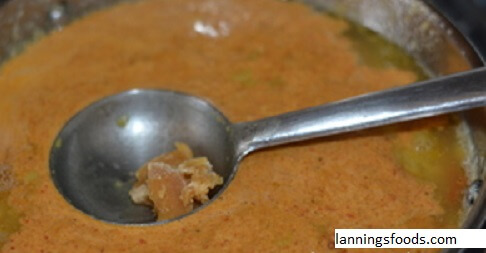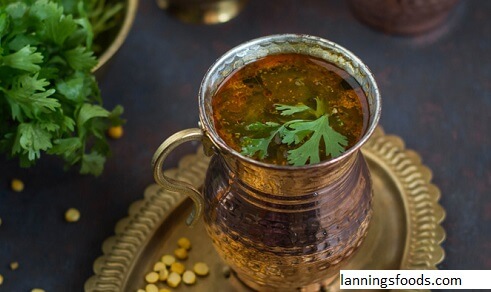Devasthana Saaru: A Konkani Delicacy
Recipe:
Recipe Konkani cuisine, which contains in itself a delicious assemblage of flavors and ingredients, is indeed a treasure when it comes to food. Among the mouthwatering dishes included in this culinary list is the simple flavored lentil soup known as Devasthana Saaru, representing the crux of Recipe Konkani cooking. Read further to understand its origins, ingredients, preparation techniques, cultural importance, and frequently asked questions.

Origins of Devasthana Saaru:
Recipe:
Devasthana Saaru is from the coastal regions of Karnataka and Maharashtra, mainly in the Konkani-speaking world. Saaru means “soup” in the Kannada language, while devasthana is a temple. This was traditionally a dish offered as a prasad during festive occasions in temples. The making varies from home to home, but the basic ingredients along with the scent are the same and speak of the prevalent produce and culinary practices.
INGREDIENTS:
Recipe:
Devasthana Saaru is a nutritious festival food that celebrates all the local ingredients. Here’s what you will need:
Base Ingredients:
- Pigeon Peas (Toor Dal): 1 cup
- Chopped Tomatoes: 2 medium-sized
- Tamarind: A small lemon-sized ball or 2 tablespoons of tamarind paste
- Turmeric Powder: 1/2 teaspoon
- Salt: To taste
- Water: 4-5 cups
Masala Ingredients:
- Coriander Seeds: 2 tablespoons
- Cumin Seeds: 1 teaspoon
- Black Pepper: 1/2 teaspoon
- Dried Red Chilies: 2-3, adjust according to spice preference.
- Grated Coconut: half cup, fresh or desiccated
- GINGER 1-inch piece
- GARLIC 2-3 cloves
Tempering Ingredients:

- Mustard seeds 1 teaspoon
- Curry leaves Handful
- Oil 2 tablespoons (Coconut oil preferred)
- Asafoetida (Hing) A pinch
Preparation Method:
Recipe:
Step 1: Masala Preparation
- Dry Roast the spices: Dry roast the coriander seeds, cumin seeds, black pepper, and dried red chilies by putting them in a pan over low heat until they give out a fragrant smell. Be careful not to burn.
- Grinding the Masala: Let the roasted spices cool, and then grind with grated coconut, ginger, and garlic to a fine paste using a little water. Keep aside.
Step 2: Cooking the Lentils
- Cooking the Toor Dal: Clean the toor dal by passing it under running water so the water runs clear. In a pressure cooker, add 3 cups of water, turmeric powder, and a pinch of salt. Pressure cook about 3-4 whistles until the dal is soft and mushy.
- Preparing the Tamarind Water: Preparing the Tamarind Water Soak the tamarind in warm water for about 15 minutes. Once softened, extract the juice and strain it to remove the pulp and seeds.
Step 3: Mixing Ingredients
- Mixing the Cooked Dal: Mixing the Cooked Dal Mix the cooked toor dal with the chopped tomatoes and the tamarind water in a big pot. Add more water to get the desired consistency. In this case, I added about 4-5 cups of water.
- Adding the Masala: Add the ground masala paste and let it come to a boil. Proceed to simmer on low for 10-15 minutes, allowing the flavors to combine. Add salt according to your taste.
Step 4: Tempering
- Preparation of Oil: Put some coconut oil in a small pan over heat and add mustard seeds. Let it crackle.
- Adding Aromatics: Add curry leaves and asafoetida to this and sauté for a minute till aromatic.
- Finishing Touch: Finishing Touch Pour the tempering over the simmering start. Just give it a gentle stir, and your Devasthana Saaru is ready!
Serving Suggestions:
Devasthana Saaru tastes its best when served hot with steamed rice and a dollop of ghee accompanied by crispy papad and a side of vegetable fry. It may also be served with dosa or idli. This dish is soothing and renders perfect comfort food for rainy days or cold evenings.
Cultural Importance:
Recipe:
Apart from its traditional significance in Konkani culture as a link to one’s heritage and society, Devasthana Saaru holds a special place in religious ceremonies and festivals as it stands for purity and nourishment. The dish represents the ethos of the Konkanis by employing local ingredients and easy cooking, cherished by its simple essence in many homes. It is often prepared in significant festivals such as Ganesh Chaturthi or Diwali, where families come together to share meals and traditions.
FAQs of Devasthana Saaru:
Recipe:
1. Can I use other lentils instead of toor dal?
Yes, while toor dal is traditional, you can use moong dal or masoor dal. However, there may be slight differences in terms of taste and texture.
2. Is Devasthana Saaru spicy?
The dish comes out quite spicy. You can also reduce the number of dried red chilies or omit black peppercorns if you would like a more subdued version of this dish.
3. Can I make Devasthana Saaru vegan?
Absolutely! Devasthana Saaru is vegan as such. Just substitute the ghee with vegetable oil for tempering if you would like this to be a fully vegetarian dish as well.
4. How long can I keep Devasthana Saaru?
This one can be prepared in advance and kept refrigerated for up to 2 to 3 months or frozen for up to 6 months.
Devasthana Saaru can be refrigerated for 2-3 days. It has to be lightly reheated before it’s served. It’s also great for freezing; just remember to thaw and reheat them whenever needed.
5. What can I serve with Devasthana Saaru?
Devasthana Saaru goes perfectly with steamed rice, roti, dosa, and idli. The meal can be complemented by preparing some papad, stir-fried vegetables, or even a pickle to throw in there.
Conclusion:
Recipe:

Devasthana Saaru is a total example of Konkani delicacies and simplicity with richness. Its convenience for preparation and the scope of using it will ensure that it becomes a favorite dish to be prepared on any occasion. Whether you are an avid cook or a novice, this recipe beckons you to enjoy the wonderful taste of Konkani cuisine. So get your ingredients together and take a spoonful of the Konkan coast in the kitchen.